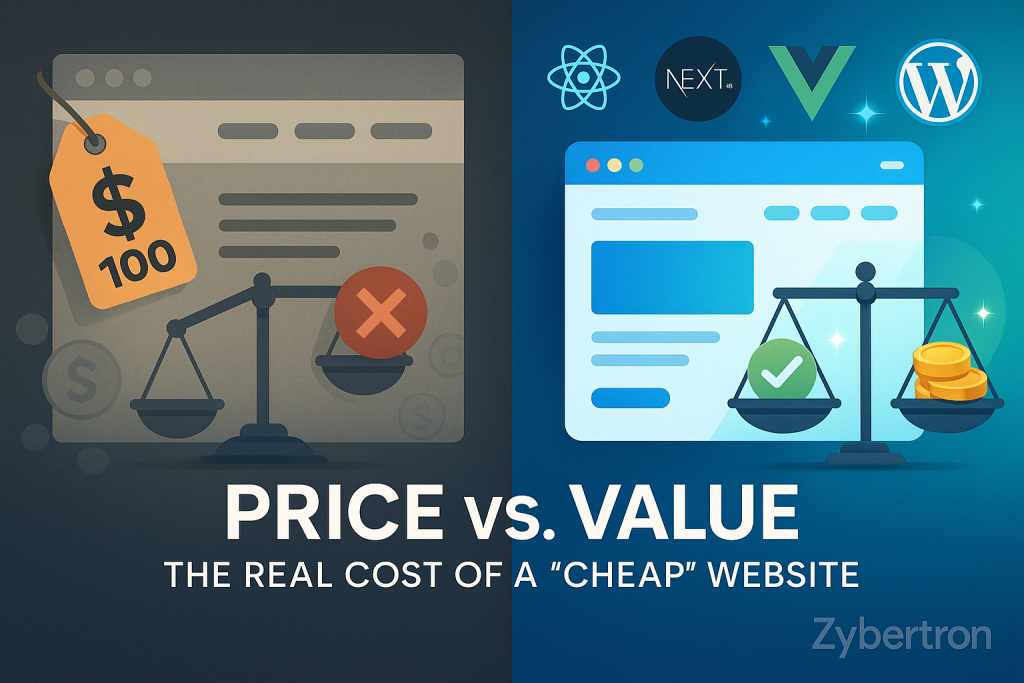When you’re in the market for a new website, every business faces a pivotal choice. You start collecting quotes, and before you know it, one of them stands out because it’s significantly cheaper than the rest. It’s tempting to go for that lower price to save some cash upfront, but there’s an important question you need to consider: what’s the real cost of that “cheap” website?
Think of a website as more than just a one-time purchase; it’s a key asset for your business. Shifting your perspective to see it as a long-term investment instead of a short-term expense is the first step toward making a wise choice. That initial low price often conceals a mountain of future expenses that can stifle your growth, tarnish your brand, and ultimately cost you much more down the line.

The Hidden Cost of Technical Debt
Opting for low-cost development usually means corners are being cut. This often leads to a website built on a shaky foundation of “technical debt”—messy, undocumented code that’s tough to maintain and prone to glitches. At first glance, the site might seem fine, but issues will start to emerge later on. What should be simple updates turn into complex, time-consuming tasks. Performance can slow to a crawl, and fixing one bug can somehow lead to three more popping up. A quality development partner takes the time to create a clean, scalable architecture, ensuring your website remains efficient, easy to maintain, and has a lower total cost of ownership over its lifespan.
The Price of a Poor User Experience
A budget website often neglects the user experience (UX). The design might be clunky, navigation could be confusing, and it’s almost guaranteed that it won’t be optimized for mobile devices. This leads to a frustrating experience for your visitors. The fallout is immediate: high bounce rates, low engagement, and lost customers. Your website serves as your digital first impression; a subpar UX sends a message that your brand is unprofessional and unreliable, actively pushing potential business away. A strategic partner knows that a smooth UX is crucial for driving conversions and building brand loyalty.
The Risk of a Fragile Foundation
When it comes to low-bid companies, two critical areas often take a hit: security and scalability. A website that relies on outdated security measures is like leaving the front door wide open for data breaches, which can tarnish your brand’s reputation in an instant. Plus, these sites usually aren’t built to handle growth. So, when your business takes off and traffic spikes, the site can crash, forcing you to start all over again and wiping out any initial savings. A professional firm, on the other hand, weaves security and scalability into the very fabric of your website, creating a strong asset that not only protects your business but also grows alongside it.
Conclusion: Investing in a Partner, Not Just a Product
The decision isn’t just about choosing between a cheap website and a pricier option. It’s about weighing a short-term cost that could lead to long-term headaches against a strategic investment that offers enduring value. A solid development partner can save you money in the long run with lower maintenance costs, better conversion rates, improved security, and a more robust brand reputation.
At Zybertron, we’re all about building partnerships. We focus on crafting digital platforms that aren’t just launched but are engineered to perform, scale, and propel your business forward for years to come. Before you make a choice based solely on price, let’s chat about the real value you can gain.
